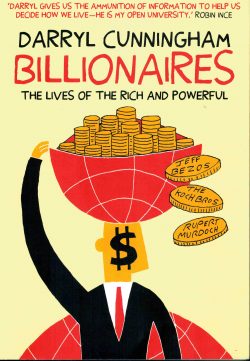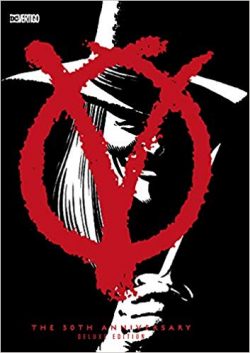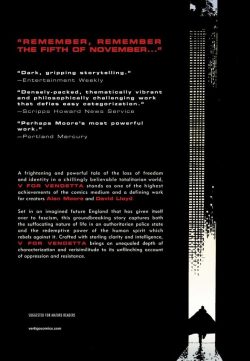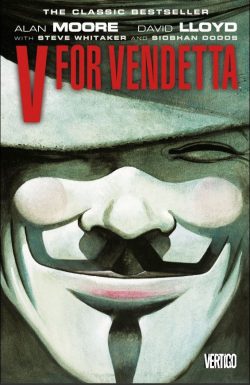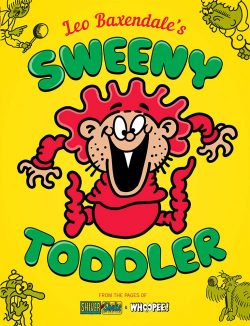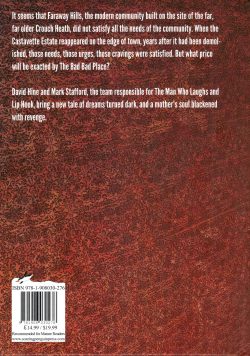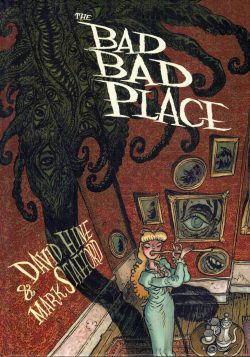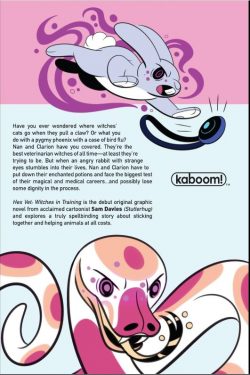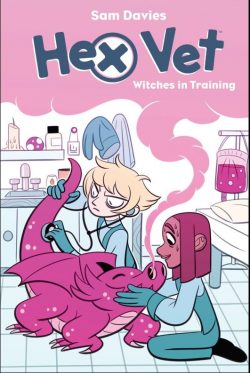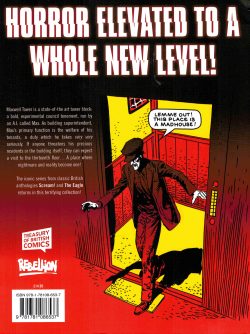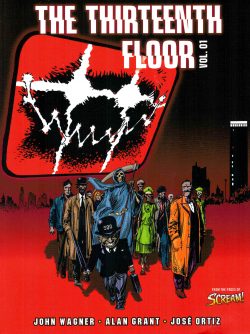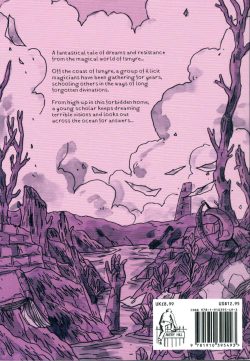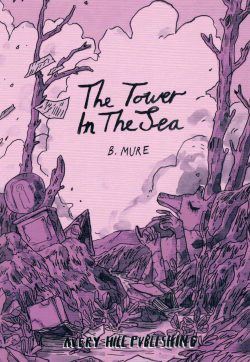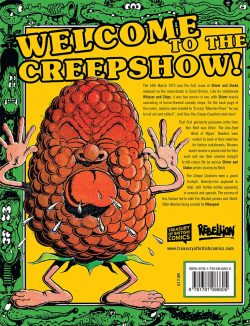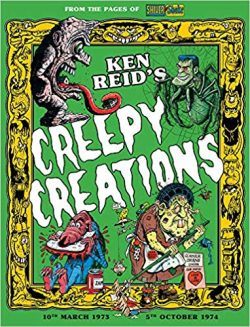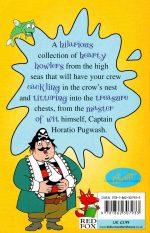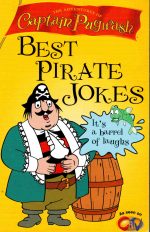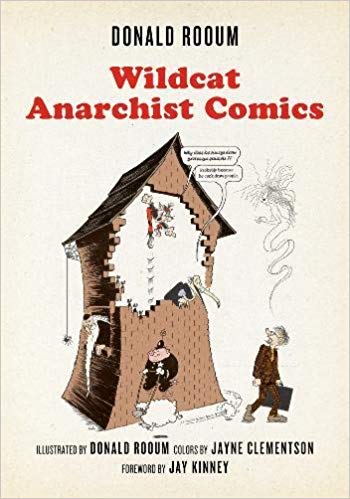
By Donald Rooum & guests (PM Press)
ISBN: 978-1-62963-1-271 (PB)
Win’s Christmas Gift Recommendation: Because the Good Fight Never Ends… 10/10
I’m afraid I’m going to overshare a bit here.
This summer was a time of great personal upset and travail for me and mine: a succession of unwelcome events that culminated in the death of a beloved pet, one family funeral, an eventually happily-resolved health scare and another literally hours-from-death life-saving heroic intervention by doctors and nurses of the National Health Service.
How any plutocratic, greedy, self-serving scum can denigrate, gaslight or deny these true heroes decent pay and conditions and job security in the name of economy or ideology is beyond my capacity to understand and I will mock and maim any agent of authority seeking to sell them out…
Sorry: it’s all still a bit raw.
However, the actual point is that – in the throes of trying to maintain an even keel and honour my personal and professional commitments over that period – I managed to completely miss the passing of one of my oldest friends and greatest mentor. I only found out that Donald Rooum died a few days ago, and it’s really preying on me now.
Thankfully, I was raised Catholic and have decades of early programming in accepting and forever internalising burdensome guilt, so I’m dealing it with it my own manner. This is part of it…
Donald Rooum (20th April 1928 – August 31st 2019) became an Anarchist in 1944 and fought the good, reasoned, acerbic but never strident fight for his particular non-political ethical standpoint since the 1950s – most notably, in cartoon form, where he used that most devastating of weapons, the pen, to deliver his payloads of well-reasoned integrity and intellectual challenge.
He was also a thinker, educator, lecturer and tireless seeker after knowledge, adding degrees in Life Sciences to his ever-expanding list of qualifications (which also included Designer, Calligrapher and Historian) before, after years of writing learned articles, becoming a Fellow of the Institute of Biology at the age of 76.
From 1952 onwards, he enjoyed a long career as a cartoonist, providing gags and strips for The Syndicalist, She, The Daily Mirror, Private Eye, The Spectator and many more. He authored many books, illustrated countless articles and bought all of us students in his wake over generations many pints when we couldn’t, and even after we could.
One of his last was Wildcat Anarchist Comics (available in both traditional paperback and cutting edge digitality) which combined a long-overdue and far too short autobiography with a selection of his decades of cartoon triumphs. Donald usual worked in black-&-white but in this compilation most of the material was diligently coloured by Jayne Clementson, making it even more accessible to our overseas cousins.
The book opens with a Foreword by Jay Kinney (Founder and Editor of legendary underground publication Anarchy Comics and a man also still fighting The Fight) before ever gracious and humble Donald uses an extended, copiously illustrated Introduction to share the salient points of his remarkable life and career with typically understated deference.
‘How and Why I Became an Anarchist’ provides historical background, revelatory moments and quite a few laughs before ‘More autobiographical stuff (in case anyone might be interested)’ traces his early exploits, allowing him to slip into lecture mode for ‘The anarchist revolution is now’.
If you check his (extremely fair but too short) Wikipedia entry you’ll see that he was responsible for exposing corruption and changing British Case Law. ‘My fifteen minutes of fame: The Challenor case’, ‘Regina v. Rooum. The Queen versus me.’, ‘Too much other news’ and ‘The public inquiry and the James Report’ gives his side of a time in 1963 when a high-ranking police officer tried (not for the first time and too often successfully) to frame CND protesters, anti-monarchists and anyone else he didn’t like with planted evidence.
Donald was instrumental in the downfall of said corrupt policeman and the changing of English Law. Don’t take my word for it, look it up. It’s still – for now – a free country. When you have checked, then you’ll know who to thank…
Donald Rooum was a force in comics, in education, in science and in the Anarchist movement for longer than I’ve been alive. As well as sharing his knowledge and honing the skills of generations of creative people and producing some of the most gently powerful and trenchant political cartooning of the last half century, he was actually a wonderfully interesting person to talk to – he would engage with anyone: you couldn’t stop him – and we’re all the poorer for his passing.
He was also a bloody fine cartoonist whose drawings and unique lettering skills are overwhelmingly entertaining. You can see that from the merest selection of his work culled from many books and strips that fills the rest of this book.
The majority of the section dubbed The Comics is filled with his signature star, eponymous impatient instigator Wildcat. She is a strident, impatient and unstoppable anthropomorphic feline who has spent decades on the pages of Freedom magazine, puncturing pomposity, inviting debate – and also abruptly ending it – whilst attempting to educate the willing in the ways the world works. She hangs around with a strange crowd of meek but dedicated, intellectual souls such as The Free Range Egghead who offers counterpoint and calming tones. Guess who usually has the last word… or action…
The collection opens with a history lesson or two and some views of alternative politics all delivered in a gentle, charming yet tellingly informative and subtly subversive manner. The jokes don’t forget to be funny and more importantly, there are no blind spots. Anarchists are as good a target as any Establishment or Vested Interest if the aim is to skewer pomposity, injustice or stupidity.
The Enemy is exemplified as Governments, Police, Big Business, The Church and smug Know-It-Alls of all nations, but there are always telling shots at Anarchists themselves – who, as you might suspect, are usually their own worst enemies if there are more than three in any location at once.
The truly amazing – and most depressing – thing is not the superb drawing talent displayed nor even the range of subjects that fall under the bellicose scrutiny of his team of lampooning and lambasting characters. It is that the issues Rooum and his occasional collaborators highlight and skewer never go away. The names and faces of political and industrial scoundrels and mountebanks may change, but the mistakes and problems they create just keep going.
The collection An Anarchist Alphabet is reproduced in its entirety: a discourse and primer on the true meaning and terminology of the work and society as viewed from a purely Anarchist perspective.
Just for the record: since the strips have to spend so much time clarifying this point, I will too. Suspend preconceptions you’ve grown used to. Actual Anarchism is the belief and aspiration that “Society should be a system where there is no Government and Social Relationships are all voluntary.†And while I’ve got the Quotation marks key under my thumb, here’s a couple from the book itself…
“Boss: one who directs, controls or dominates others†and “Government: body of persons who direct, control or dominate a state or other organisationâ€
Under the guise of a slide show lecture in a church hall, we see some funny and thought-provoking alternatives to commercialism and globalism, and the discussion portion after the lesson continues the mirth with worth.
Clever, challenging, and potentially life-changing: Surely this is what all art dreams of being? And when it makes you laugh too? This alone is a must-have item for any child of the 21st century.
We take a trip into history next as ‘Spartapuss’ gives a long view on the struggle for autonomy and self-reliance before dipping into pertinent paradigms from Anarchists Against Bombs where all the power and vitriol of his deceptively gentle gaze and accessible penmanship target the Arms Industry and the dubious political processes that equate freeing the victims of brutal oppression with blowing them up before their oppressor can get around to doing it themselves.
More deftly-drafted diatribes follow as we prowl the corridors of power and revisit ‘The Big Bang’ and even get the graphic lowdown on Challenor’ before moving on to other triumphs in The Strips.
‘Gandaft the Famous Wizard’ offers less polemical laughs yet still managed to gather controversy after ‘Gandaft’s Garden’ was created for 1987 comics collective chronicle Outrageous Tales from the Old Testament. The tale reinterprets the Christian creation myth with typically gentle savagery and wit, and sees a hairy bloke in a big hat standing in for the Big Man in the Sky…
One of Donald’s longest gigs was delineating the wry adventures of ‘Sprite’: a fairy of Shakespearean mien who debuted in The Skeptic in 1987 and just kept on charming and bewildering the readership.
Wrapping up the show is a canny, politically shaded reinterpretation of the Rumpelstiltskin fairy story as ‘The Tale of the Straw Boggart’ reveals the true human costs and rewards of trying to buy love…
This superb book is a smart, incisive primer for a brilliant and dedicated creator’s treasure trove of cartoon gold. It never forgets that you have to be funny as well as sharp if you want to get your message to stick.
We should cluster-bomb Westminster and all Fifty States (I’m assuming of course that it will still be 50 by the time you read this) of the USA with copies of this book and every election campaign should begin with televised selected readings therefrom. Yeah, Right, If Only…
Just remember, Anarchism is about taking responsibility, not taking charge. I’m trusting you to get your own copy of this book, read it often and tell everyone you know about it.
But please, do it politely and honestly. Just like Donald would.
© Donald Rooum. This edition © 2016 PM Press. All rights reserved.

